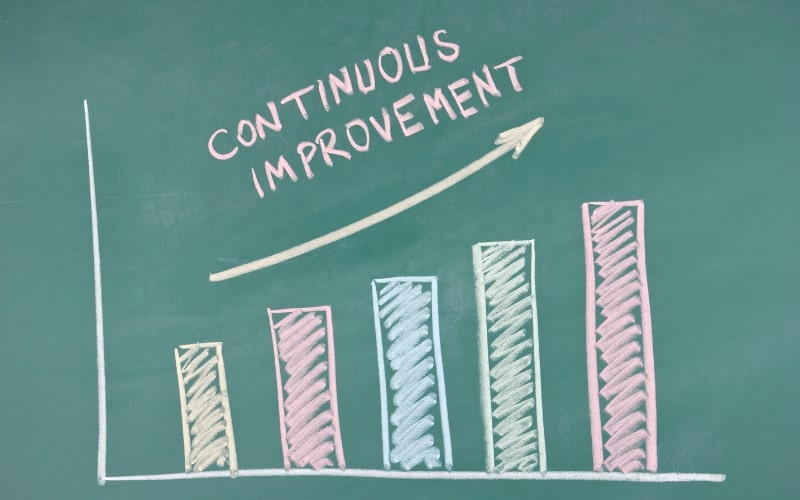- Effective Onboarding Of C-Level Executives: Setting the Stage for Success
- Building Relationships and Understanding Company Culture
- Clear Expectations and Goal Setting
- Providing Support and Resources for Continued Growth
- Strategies for Long-Term Retention and Engagement
- Conclusion: Onboarding and Retaining C-Level Executives
Onboarding and retaining C-Level executives are crucial elements in ensuring the sustained success of any organization. As these top leaders transition into their new roles, the initial period of onboarding sets the tone for their future performance and integration within the company.
A strategic onboarding process helps executives acclimate to their new environment, understand organizational goals, and build essential relationships. However, successful onboarding is only the beginning. To secure long-term commitment and engagement, organizations must implement effective retention strategies that keep executives motivated and aligned with the company’s vision. This article explores best practices for onboarding C-Level hires and outlines key strategies for retaining top executives, ensuring that they contribute to the organization’s growth and success over the long term.
Effective Onboarding Of C-Level Executives: Setting the Stage for Success

Onboarding C-Level executives is a critical process that sets the foundation for their success and the success of the organization. A well-structured onboarding program can ensure a smooth transition, accelerate integration, and maximize the executive’s impact. Here’s how to set the stage for success through effective onboarding.
Pre-Onboarding Preparation
Before the executive’s first day, thorough preparation is essential. This phase includes:
- Customized Onboarding Plan: Develop a tailored onboarding plan that aligns with the C-Level executives role, responsibilities, and objectives. This plan should outline key milestones, initial tasks, and expected outcomes for the first 90 days.
- Stakeholder Engagement: Identify and introduce key stakeholders the executive will interact with, including board members, senior management, and department heads. Schedule introductory meetings or calls to familiarize the executive with these individuals.
- Information and Resources: Provide the executive with necessary background materials, such as company history, strategic plans, organizational charts, and recent performance reports. This will help them come prepared and informed.
Structured Orientation Program
A structured orientation program is crucial for integrating the executive into the company. It should include:
- Company Overview: Start with an overview of the company’s mission, values, culture, and strategic goals. This helps C-Level executives understand the organizational context and align their vision with that of the company.
- Role-Specific Training: Offer detailed training on the executive’s role and responsibilities. This includes familiarizing them with key processes, systems, and tools they will be using.
- Team Introductions: Facilitate meetings with direct reports, peers, and other key team members. These introductions should focus on establishing relationships and understanding team dynamics and expectations.
Establishing Clear Expectations
Setting clear expectations from the outset is vital for a successful onboarding experience. This involves:
- Defining Goals and Objectives: Collaborate with the C-Level executives to set clear, measurable goals for their first 90 days. These should align with the company’s strategic priorities and provide a roadmap for their initial contributions.
- Performance Metrics: Outline how performance will be measured and reviewed. Discuss key performance indicators (KPIs) and success criteria to ensure the executive understands how their performance will be evaluated.
- Regular Check-Ins: Schedule regular check-ins with the executive to review progress, address challenges, and provide feedback. This ensures that any issues are promptly addressed and helps keep the onboarding process on track.
Support and Integration
Providing support and ensuring integration into the company culture is crucial for long-term success:
- Mentorship and Support: Assign a mentor or onboarding coach to guide C-Level executives through their initial period. This person can offer advice, answer questions, and provide valuable insights into the company culture and operations.
- Feedback Mechanisms: Implement feedback mechanisms to gauge C-Level executives’ experience and address any concerns. This could include surveys, one-on-one meetings, and feedback sessions with team members.
- Cultural Assimilation: Encourage participation in company events, meetings, and informal gatherings to help C-Level executives become more integrated into the company culture. This will aid in building relationships and understanding the organization’s values and norms.
Monitoring and Adjustment
Ongoing monitoring and adjustment of the onboarding process are essential to ensure its effectiveness:
- Performance Reviews: Conduct formal performance reviews at the end of the initial onboarding period to assess the C-Level executive’s progress and alignment with their goals.
- Continuous Improvement: Use feedback from the C-Level executive and other stakeholders to refine and improve the onboarding process for future hires. Continuous improvement helps ensure that the onboarding process evolves and remains effective.
Building Relationships and Understanding Company Culture

Integrating C-Level executives into a company’s culture and fostering relationships with key stakeholders are crucial steps in ensuring their long-term success and alignment with organizational goals. A strategic approach to these aspects can significantly impact the executive’s effectiveness and the overall harmony within the organization.
The Importance of Company Culture Integration
Company culture embodies the values, beliefs, and behaviors that shape how work is done and how employees interact. For C-Level executives, understanding and adapting to this culture is essential for several reasons:
- Alignment with Organizational Values: C-Level executives must embody and promote the company’s core values. Their leadership style and decisions should reflect these values to inspire and influence their teams positively.
- Facilitating Effective Leadership: Understanding the company culture helps executives lead in a way that resonates with employees. It enables them to navigate the organizational landscape effectively and make decisions that are culturally coherent.
- Enhancing Employee Engagement: When executives demonstrate an understanding and respect for the company culture, it fosters trust and engagement among employees. This alignment can boost morale and drive collective efforts towards common goals.
Strategies for Cultural Integration
To effectively integrate into the company culture, executives should focus on the following strategies:
- Immersive Learning: Encourage C-Level executives to immerse themselves in the company’s culture by participating in team events, meetings, and informal gatherings. This immersion helps them understand the unspoken norms and values that influence day-to-day interactions.
- Cultural Ambassadors: Identify and engage with cultural ambassadors within the organization—employees who exemplify the company’s values. These individuals can provide valuable insights into the culture and offer guidance to C-Level executives on navigating it effectively.
- Feedback Mechanisms: Implement regular feedback mechanisms to gauge the C-Level executive’s cultural integration. This can include 360-degree feedback from peers, subordinates, and other stakeholders to assess how well the executive is adapting and addressing any gaps.
Fostering Relationships with Key Stakeholders
Building strong relationships with key stakeholders is essential for C-Level executives to establish credibility and influence. Here’s how they can achieve this:
- Identifying Key Stakeholders: Start by identifying who the key stakeholders are—board members, C-Level executives, department heads, and influential employees. Understanding their roles, interests, and concerns will help the executive approach relationship-building strategically.
- Building Trust and Credibility: Trust is fundamental in any relationship. C-Level executives should focus on demonstrating competence, transparency, and reliability in their interactions with stakeholders. Regular communication and delivering on promises are crucial for building and maintaining trust.
- Active Listening and Engagement: C-Level executives should engage in active listening to understand stakeholder perspectives and concerns. This involves not only hearing but also responding thoughtfully and showing empathy towards their viewpoints. Building genuine connections through meaningful conversations can strengthen relationships.
- Collaborative Approach: Encourage a collaborative approach by involving stakeholders in decision-making processes and seeking their input on key initiatives. This inclusion fosters a sense of ownership and partnership, leading to more effective and supportive relationships.
Monitoring and Adjusting
Effective integration into the company culture and relationship-building is an ongoing process. Executives should:
- Continuously Evaluate: Regularly assess their cultural fit and relationship dynamics. Solicit feedback from colleagues and stakeholders to identify areas for improvement.
- Adapt as Needed: Be open to adjusting their approach based on feedback and evolving organizational dynamics. Flexibility and willingness to adapt can enhance their integration and effectiveness.
Clear Expectations and Goal Setting

Setting clear expectations and defining key goals are essential components of successful executive onboarding. For C-Level executives, this process ensures alignment with the company’s vision, drives performance, and facilitates a smooth transition into their new role. Here’s how setting clear expectations and goals can help C-Level executives integrate effectively and contribute meaningfully to the organization.
The Role of Clear Expectations
Clear expectations provide a roadmap for C-Level executives, outlining what is required for success in their new role. This clarity is crucial for several reasons:
- Avoiding Ambiguity: Clear expectations eliminate ambiguity about job responsibilities and performance standards. This allows executives to focus on their core tasks without being hindered by uncertainty or miscommunication.
- Guiding Performance: By understanding what is expected of them, executives can prioritize their efforts and resources effectively. Clear expectations help them navigate their responsibilities and make informed decisions that align with company goals.
- Facilitating Accountability: When expectations are clearly defined, it becomes easier to measure performance and hold executives accountable. This accountability ensures that executives remain focused on achieving key objectives and contributing to the company’s success.
Setting SMART Goals
Defining key goals for C-Level executives involves setting SMART goals—Specific, Measurable, Achievable, Relevant, and Time-bound. Here’s how each element contributes to effective goal setting:
- Specific: Goals should be clear and specific, outlining exactly what needs to be achieved. For example, instead of a vague goal like “improve sales,” a specific goal would be “increase quarterly sales by 15% through targeted marketing campaigns,” ensuring alignment with the responsibilities of C-Level executives.
- Measurable: Goals need to be measurable so that progress can be tracked and assessed. This involves defining metrics and benchmarks that will indicate success. For instance, setting a goal to “reduce operational costs by 10%” includes a measurable target that C-Level executives can oversee and evaluate effectively.
- Achievable: Goals should be realistic and attainable, considering the C-Level executive’s role, resources, and constraints. Setting overly ambitious goals can lead to frustration and disengagement, while achievable goals motivate and drive performance.
- Relevant: Goals must be aligned with the company’s strategic objectives and the C-Level executive’s role. Relevant goals ensure that their efforts contribute directly to the organization’s success, fostering a focus on high-impact initiatives.
- Time-bound: Establishing a timeline for achieving goals provides a sense of urgency and accountability. Time-bound goals help C-Level executives plan their activities and track progress over specific periods, such as quarterly or annually.
Aligning Goals with Company Vision
Aligning executive goals with the company’s vision and strategic objectives is essential for ensuring that their efforts support the broader organizational mission. Here’s how this alignment can be achieved:
- Strategic Planning: Engage C-Level executives in the company’s strategic planning process to ensure they understand the long-term vision and how their role contributes to it. This involvement helps C-Level executives set goals that are in harmony with the company’s overall direction.
- Communication of Vision: Clearly communicate the company’s vision, mission, and strategic priorities to C-Level executives. This helps them align their goals with the organization’s objectives and understand how their role fits into the bigger picture.
- Regular Reviews: Conduct regular reviews to assess progress towards goals and ensure continued alignment with the company’s vision. These reviews provide opportunities for feedback, adjustment of goals, and reinforcement of the C-Level executive’s role in achieving the company’s objectives.
Providing Support and Resources for Continued Growth

Supporting C-Level executives in their ongoing professional development is essential for their long-term success and effectiveness within the organization. Providing the right resources and support ensures that executives not only meet their initial goals but also continue to grow and adapt to the evolving demands of their roles. Here’s how to offer the support and resources necessary for their continued growth.
Access to Executive Coaching and Mentoring
One of the most valuable resources for C-Level executives is access to executive coaching and mentoring. These support mechanisms offer several benefits:
- Personalized Guidance: Executive coaches provide tailored advice and strategies that address the specific challenges and goals of the executive. They help executives refine their leadership skills, enhance decision-making capabilities, and navigate complex organizational dynamics.
- Objective Feedback: Coaches offer an external, unbiased perspective on the executive’s performance and behavior. This feedback is crucial for identifying areas of improvement and developing action plans for personal and professional growth.
- Mentoring Relationships: Pairing executives with experienced mentors within or outside the organization can provide additional insights and guidance. Mentors share their experiences, offer advice, and help executives build valuable networks.
Continued Learning and Development Opportunities
Ongoing education and professional development are crucial for keeping executives updated with industry trends and best practices. Providing opportunities for continued learning can include:
- Leadership Training: Enroll executives in advanced leadership programs and workshops that focus on emerging leadership trends, strategic thinking, and innovative management practices. These programs help executives stay ahead in their roles and enhance their leadership capabilities.
- Industry Conferences and Seminars: Encourage participation in industry conferences and seminars. These events provide exposure to the latest industry developments, networking opportunities, and insights from thought leaders.
- Online Courses and Certifications: Offer access to online courses and certification programs that align with the executive’s interests and career goals. These can cover areas such as digital transformation, financial acumen, or global business strategies.
Providing Tools and Resources for Success
Equipping executives with the right tools and resources is essential for their effectiveness and productivity. This includes:
- Technology and Systems: Ensure executives have access to the latest technology and systems that support their decision-making and operational efficiency. This includes advanced data analytics tools, communication platforms, and project management software.
- Research and Insights: Provide access to industry reports, market research, and competitive analysis. This information helps executives make informed decisions and stay abreast of industry trends.
- Support Staff: Consider providing dedicated support staff or resources to assist with administrative tasks, research, or strategic planning. This allows executives to focus on high-impact activities and strategic initiatives.
Fostering a Culture of Feedback and Development
Creating an environment that encourages continuous feedback and development supports executive growth:
- Regular Performance Reviews: Implement a system for regular performance reviews that includes constructive feedback and discussion of development goals. These reviews should be collaborative, focusing on identifying strengths and areas for improvement.
- Development Plans: Work with executives to create personalized development plans that outline specific goals, milestones, and resources needed for growth. Regularly review and adjust these plans based on progress and changing needs.
Encouraging Work-Life Balance and Well-Being
Maintaining a healthy work-life balance is crucial for sustained performance and well-being:
- Wellness Programs: Offer wellness programs and resources that support physical and mental health. This can include stress management workshops, fitness memberships, and counseling services.
- Flexible Work Arrangements: Consider providing flexible work arrangements that allow executives to balance their professional responsibilities with personal needs.
Strategies for Long-Term Retention and Engagement

Retaining top executives is vital for maintaining organizational stability and driving long-term success. Ensuring that these key leaders remain engaged, motivated, and committed requires a thoughtful approach. Here are several strategies to foster long-term retention and engagement for C-Level executives.
Competitive Compensation and Benefits
To keep top executives motivated, it’s crucial to offer a competitive compensation package that reflects their value and contributions. This includes:
- Base Salary and Bonuses: Ensure the base salary is competitive within the industry. Include performance-based bonuses tied to both individual and company-wide achievements to align the executive’s goals with organizational success.
- Equity and Long-Term Incentives: Offer stock options or equity shares that vest over time. This not only provides a financial incentive but also aligns the executive’s interests with the company’s long-term growth.
- Comprehensive Benefits: Provide a robust benefits package, including health insurance, retirement plans, and other perks that support the executive’s well-being and work-life balance.
Career Development and Growth Opportunities
Executives are more likely to stay with a company if they see opportunities for personal and professional growth. Strategies to promote career development include:
- Continuous Learning: Support ongoing education and training through executive coaching, industry conferences, and advanced degree programs. This helps executives stay at the forefront of their field and enhances their leadership skills.
- Mentorship and Networking: Facilitate access to mentors and networking opportunities with industry leaders. This provides executives with valuable insights and expands their professional connections.
- Career Pathing: Work with executives to create clear career pathways and succession plans. Regularly discuss their career aspirations and provide opportunities for advancement within the organization.
Recognition and Reward
Recognizing and rewarding the contributions of top executives is crucial for maintaining motivation and commitment. Effective recognition strategies include:
- Public Acknowledgment: Regularly acknowledge achievements and milestones in company meetings, newsletters, or other communication channels. Public recognition reinforces the executive’s value and contributions.
- Personalized Rewards: Tailor rewards to individual preferences, whether through additional time off, unique experiences, or personalized gifts. Understanding and addressing what motivates each executive can enhance their satisfaction.
- Celebrating Successes: Create a culture that celebrates both individual and team successes. Organize events or gatherings to recognize accomplishments and foster a sense of community and shared achievement.
Meaningful Work and Autonomy
Executives are more likely to stay engaged when they find their work meaningful and have the autonomy to make impactful decisions. Strategies to ensure meaningful work include:
- Aligning Vision and Values: Ensure the executive’s role aligns with their personal values and career goals. Providing opportunities to work on strategic projects that resonate with their interests can increase job satisfaction.
- Empowering Decision-Making: Allow executives the autonomy to make key decisions and lead initiatives. Trusting them to drive important aspects of the business fosters a sense of ownership and commitment.
Strong Organizational Culture and Work Environment
A positive organizational culture and work environment play a significant role in retaining top executives. Focus on:
- Open Communication: Foster a culture of transparency and open communication. Regularly solicit feedback from executives and involve them in strategic discussions to ensure they feel heard and valued.
- Work-Life Balance: Support a healthy work-life balance through flexible work arrangements and wellness programs. Ensuring executives have time to recharge can prevent burnout and enhance their long-term commitment.
Conclusion: Onboarding and Retaining C-Level Executives
Effective onboarding and retention of C-Level executives are not merely about facilitating a smooth transition; they are pivotal to sustaining organizational excellence and achieving strategic goals. By investing in a comprehensive onboarding process, organizations can set their executives up for immediate success and long-term impact. Complementing this with robust retention strategies ensures that these leaders remain engaged, motivated, and committed.
Through competitive compensation, career development opportunities, and a culture of recognition, organizations can foster an environment where top executives thrive and drive ongoing success. Ultimately, a well-executed approach to onboarding and retention enhances organizational stability and propels the company towards its strategic objectives.

